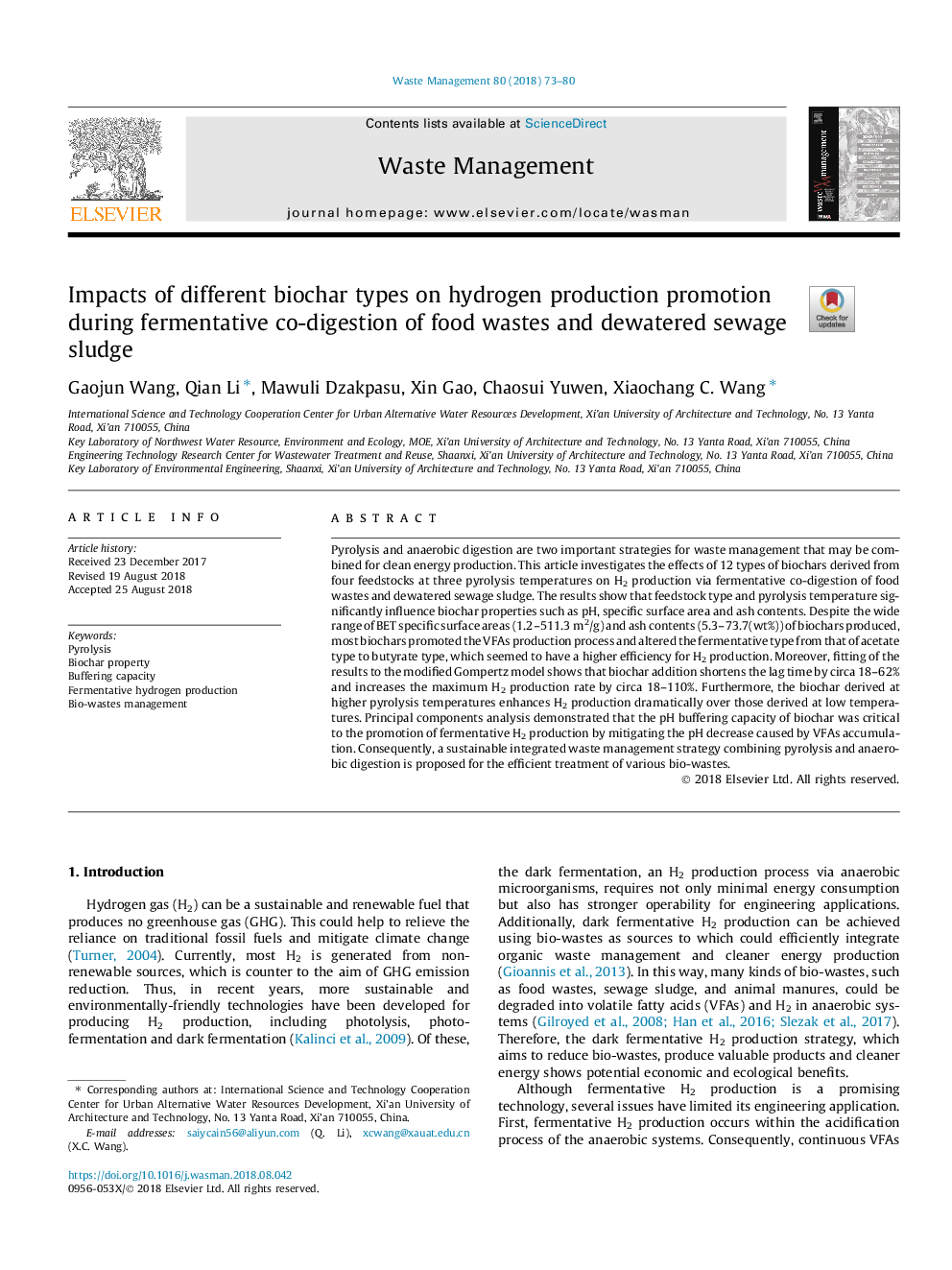| Article ID | Journal | Published Year | Pages | File Type |
|---|---|---|---|---|
| 8966019 | Waste Management | 2018 | 8 Pages |
Abstract
Pyrolysis and anaerobic digestion are two important strategies for waste management that may be combined for clean energy production. This article investigates the effects of 12 types of biochars derived from four feedstocks at three pyrolysis temperatures on H2 production via fermentative co-digestion of food wastes and dewatered sewage sludge. The results show that feedstock type and pyrolysis temperature significantly influence biochar properties such as pH, specific surface area and ash contents. Despite the wide range of BET specific surface areas (1.2-511.3â¯m2/g) and ash contents (5.3-73.7(wt%)) of biochars produced, most biochars promoted the VFAs production process and altered the fermentative type from that of acetate type to butyrate type, which seemed to have a higher efficiency for H2 production. Moreover, fitting of the results to the modified Gompertz model shows that biochar addition shortens the lag time by circa 18-62% and increases the maximum H2 production rate by circa 18-110%. Furthermore, the biochar derived at higher pyrolysis temperatures enhances H2 production dramatically over those derived at low temperatures. Principal components analysis demonstrated that the pH buffering capacity of biochar was critical to the promotion of fermentative H2 production by mitigating the pH decrease caused by VFAs accumulation. Consequently, a sustainable integrated waste management strategy combining pyrolysis and anaerobic digestion is proposed for the efficient treatment of various bio-wastes.
Related Topics
Physical Sciences and Engineering
Earth and Planetary Sciences
Geotechnical Engineering and Engineering Geology
Authors
Gaojun Wang, Qian Li, Mawuli Dzakpasu, Xin Gao, Chaosui Yuwen, Xiaochang C. Wang,
